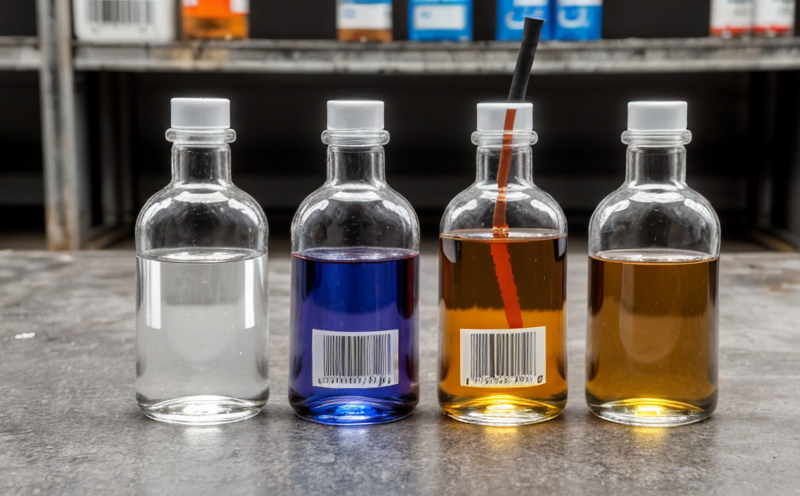ISO 4577 Accelerated Aging Stability Testing of Plastics
The ISO 4577 standard provides a method to determine the resistance of plastics to aging under controlled laboratory conditions. This accelerated aging test is particularly useful for predicting long-term behavior of plastic materials, especially in environments with high heat and light exposure.
Accurate testing is crucial as it helps manufacturers understand how their products will perform over time, ensuring durability and reliability. The ISO 4577 method simulates the effects of real-world aging by exposing specimens to a combination of heat, humidity, and light in a controlled environment.
The test protocol involves placing plastic samples inside an accelerated aging chamber where they are subjected to specific temperature and relative humidity levels over a defined period. The exposure mimics the environmental stressors that might occur during product use or storage, allowing for early detection of potential issues such as discoloration, brittleness, loss of mechanical properties, and chemical changes.
The key advantage of this test is its ability to provide insights into long-term performance without requiring extended real-world exposure. This makes it an essential tool in product development and quality assurance for industries where material stability is critical, such as automotive, electronics, and packaging.
During the testing process, specimens are prepared according to ISO 4577 guidelines, which include cleaning, conditioning, and marking them appropriately. After exposure to the accelerated aging conditions, the specimens undergo rigorous inspection for any signs of degradation or failure.
| Parameter | Value Range |
|---|---|
| Temperature | 100°C to 250°C |
| Relative Humidity | 45% to 95% |
| Duration of Exposure | 168 hours or more |
The test results are then analyzed using various techniques, including visual inspection, mechanical property testing, and chemical analysis. The data obtained can be used to assess the stability of the plastic material under simulated aging conditions.
For quality managers and compliance officers, this service ensures that products meet regulatory standards and customer expectations by providing a clear understanding of potential long-term performance issues. It also aids in optimizing product design and material selection for improved durability.
Quality and Reliability Assurance
The ISO 4577 test plays a vital role in quality and reliability assurance by offering a robust method to evaluate the aging resistance of plastic materials. This is particularly important for ensuring that products can withstand harsh environmental conditions throughout their lifecycle.
By using this accelerated aging process, manufacturers can identify any potential weaknesses or vulnerabilities early on in the development stage. This proactive approach helps prevent costly recalls and repairs by addressing issues before they become critical problems.
- Early Detection: Identifies issues with plastic materials at an earlier stage than traditional long-term field testing.
- Cost Efficiency: Reduces the need for extensive real-world exposure, saving time and resources.
- Regulatory Compliance: Ensures that products meet industry standards and regulations related to material stability.
The results of this testing can be used to refine production processes, select more suitable materials, or adjust product design for enhanced durability. This ensures that the final product is reliable and meets customer expectations, thereby increasing overall satisfaction and trust in the brand.
Customer Impact and Satisfaction
The ISO 4577 accelerated aging stability testing of plastics has a significant impact on customer satisfaction by ensuring that products perform consistently over time. By identifying any potential weaknesses early in the development process, manufacturers can address issues before they become critical problems.
This proactive approach enhances product reliability and durability, leading to increased customer trust and loyalty. Satisfied customers are more likely to recommend the brand and repurchase products, which contributes to long-term business success.
Moreover, meeting regulatory standards through this testing process ensures that products are safe and effective for their intended use. This compliance not only protects consumers but also builds a positive reputation for the company in the market.
A key benefit of ISO 4577 is its ability to provide consistent results across different environments and conditions, allowing customers to rely on the tested materials with confidence. Reliable products lead to better customer experiences and satisfaction, ultimately driving business growth and sustainability.
Use Cases and Application Examples
- Automotive Industry: Ensures that plastic components used in vehicles can withstand the extreme heat and sunlight exposure encountered during use.
- Electronics Sector: Evaluates the long-term reliability of plastic casings and enclosures for electronic devices exposed to high temperatures and humidity.
- Packaging Industry: Tests the durability of packaging materials under various environmental conditions, ensuring product integrity during transportation and storage.
| Industry Sector | Product Type | Environmental Stressors |
|---|---|---|
| Automotive | Dashboard Components | High Heat and Sunlight Exposure |
| Electronics | Casing for Smartphones | Heat, Humidity, UV Light |
| Packaging | Plastic Bottles | High Heat and Moisture |





